By Philip Shelley
WITH ADDITIONAL REPORTING BY SARAH DELAGE, CHRISTOPHER ROSE, AND DANIEL LAMBERT
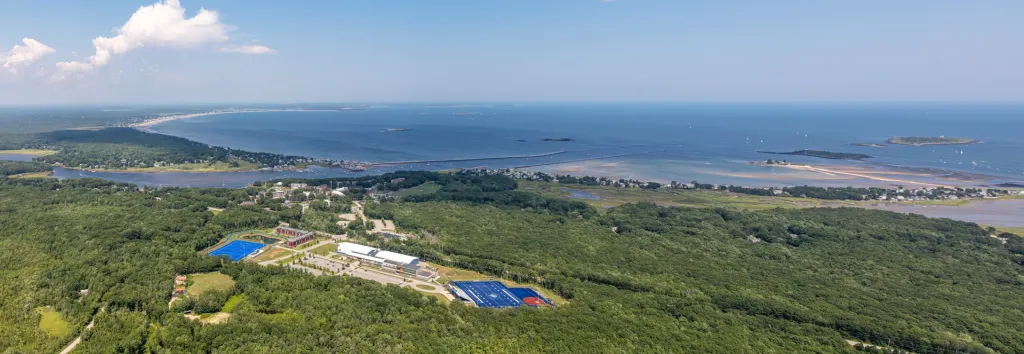
The Gulf of Maine is warming faster than 99% of the world’s oceans. This makes it the perfect test bed for UNE scientists and students who are interested in understanding the causes and mitigating the negative effects of global climate change.
On August 8, 2019, the United Nations Intergovernmental Panel on Climate Change culminated a week-long summit in Geneva with the release of a special report on land use that called for drastic changes to current agricultural practices and the human diet (especially moving towards a more plant-centered diet) in order to mitigate the most catastrophic future effects of global warming.
The following day, August 9, the New York Times published a feature story with the title “What Worries Iceland? A World Without Ice. It is Preparing.” Accompanied by gorgeous photos of windswept volcanic ground newly uncovered by the rapidly receding glacier, the article detailed the frantic efforts of the Icelandic government to muster a coherent and effective response to unprecedented environmental changes that are impacting every aspect of life in the tiny Arctic nation — from economy to food supply to infrastructure.
Stories about climate change are becoming more common and more mainstream, moving onto our front pages as they become an undeniable aspect of more and more people’s lived experience. As reported in a Washington Post special feature this past January, “Gone in a Generation,” climate change is no longer some abstract future menace: “Across America,” screams the headline, “climate change is already disrupting lives.”
For coastal Mainers, that disruption, both actual and potential, is already hitting close to home, profoundly affecting such key areas as fisheries (including the state’s all-important lobster fishery), agriculture, waterfront development, and both winter and summer tourism. This is due in part to the fact that the Gulf of Maine, the 36,000 square miles of relatively enclosed ocean stretching from Cape Cod to Nova Scotia, is warming faster than 99% of the world’s oceans.
A Living Laboratory
With the Gulf of Maine lapping up more or less against UNE’s doorstep, this means that, for better or worse, UNE students and faculty are perfectly situated to study the causes and effects of climate change and to help devise solutions — scientific, political, and social — and to help facilitate constructive responses to mitigate potentially harmful effects both here in Maine and around the world.
“The Gulf of Maine is a test bed for what's going to happen over the next 40 to 50 years, all throughout the world's oceans,” says Charles Tilburg, Ph.D., director of the School of Marine Programs at UNE.
“We're lucky at UNE because we are right on the coast, and it is basically a living laboratory for our students,” says Pamela Morgan, Ph.D., a professor in UNE’s Department of Environmental Studies. “Right here in our backyard, we have the habitats that are being impacted, and we can look at some of the solutions we could potentially create for dealing with some of these impacts. So this is a great place for students who want to learn about climate change — not just about all the bad things that are going to happen, but what can we do about it.”
Charles Tilburg and the Rapidly Warming Gulf of Maine
“2012 was one of the warmest years ever recorded for the Gulf of Maine,” says Tilburg. That temperature spike alerted climate scientists to just how critical the problem was. “We knew it was going fast,” says Tilburg, “but we had no idea that it was warming as fast as it was.”
From 1982 to 2012 the Gulf of Maine was warming at a rate of about 0.03 degrees Celsius per year, which is a little bit higher than the rest of the world’s oceans but not significantly higher. But since 2004 the Gulf has been warming at four or five times that rate, about 0.23 degrees Celsius per year, which means that over the past 15 years, the average temperature has risen over three degrees Celsius.
Tilburg puts that increase in perspective. “Sometimes people say, ‘Three degrees Celsius, what's the big deal?’ But we’re talking about the annual average. And to put that in perspective, 20,000 years ago, the average temperature where we are was about five degrees Celsius colder than it is now.” He laughs. “There was a mile-thick slab of ice where we are. So, when we're talking averages, that masks huge variations.”
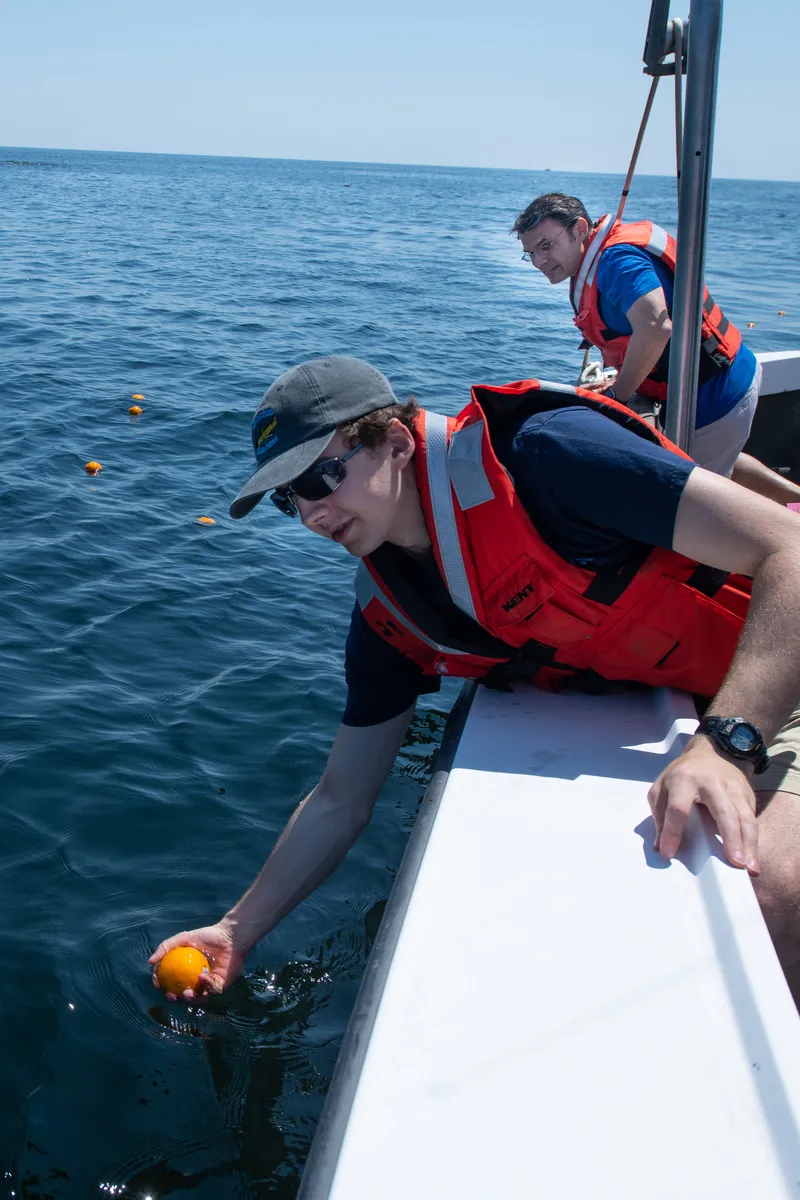
The Gulf of Maine is Like a Bathtub
The factors behind the rapid warming are many and various — as Tilburg says, “It’s the perfect storm.” The Gulf of Maine is relatively shallow, which means it absorbs atmospheric heat more quickly than most of the rest of the ocean (think of a wading pool in the sun). It also is fed by over 60 rivers, which warm faster than oceans, so watershed drainage dumps even more warm water into the Gulf. The Gulf of Maine is also partially enclosed by the Georges Bank, which blocks it from being completely open to the cold waters of the North Atlantic.
“Think of it as kind of like a bathtub,” says Tilburg. “And the temperature in this bathtub is being governed by heat from above, but also warm water and cold water flowing in. The hot-water faucet is the rivers and everything else. The cold-water faucet is the Labrador Current, which originates in the Labrador Sea and flows down along Newfoundland and Nova Scotia and enters the Gulf of Maine through the northeast channel. The Labrador Current also pushes the Gulf Stream current away, which is really warm water.”
But climate change — particularly Arctic warming — is beginning to influence the network of ocean currents, slowing and weakening longstanding cycles of warming and cooling that dictate patterns of water flow around the globe. “Since the early 2000s, the Labrador current has been getting weaker,” explains Tilburg, “so we're getting less cold water coming into the Gulf of Maine. At the same time, the Gulf Stream has been moving north, and we're getting more warm water into the Gulf of Maine. Basically, we’re turning down the cold faucet, and we're turning up the hot faucet — it’s no wonder the Gulf of Maine is getting warmer.”
Peter Slovinsky and the Dangers of Rising Sea Levels
Peter Slovinsky, a coastal geologist with the Maine Geological Survey and the Department of Agriculture Conservation and Forestry, has found that sea level is rising in the Gulf of Maine at about the same rate it is rising in the global oceans. Over the past century or so, that rate has averaged about 1.8 millimeters per year, for a total of between seven and eight inches in the state of Maine. But, says Slovinsky, “Over the last two to three decades, we've been seeing a doubling of that rate, to roughly 3.2 millimeters per year.”
That doubling is exacerbated in the Gulf of Maine by the slowing of the Gulf Stream current (caused by warmer ambient waters surrounding it) and the behavior of the North Atlantic Oscillation (an atmospheric weather phenomenon that affects the strength and direction of westerly winds over the Atlantic Ocean), both of which are currently causing ocean water to, in Slovinsky’s words, “slosh up” against the East Coast of the United States.
These trends are already affecting waterfront communities such as Portland — Maine’s largest city. Going back to 1912, Portland has experienced tides exceeding the known flood stage of 12 feet at an average rate of about six times a year. That average has now increased to about 10 times per year and is projected to continue rising.
Protect, Adapt, or Retreat
“In one analysis we did,” says Slovinsky, “we simply added about a foot of sea-level rise, which is certainly expected by the year 2050 based on the latest models. That flood frequency of eight to 10 times per year jumps to between 60 and 70 times per year. That’s basically a tenfold increase in terms of the frequency of flood events that are occurring in Portland. Once it becomes that frequent, that’s no longer just what we consider a nuisance. If it's daily, you have to respond to that. Otherwise the affected areas become unusable. Your options are, basically, protect, adapt, or retreat.”
Although the gears of federal and state government sometimes grind with agonizing slowness, many coastal municipalities have been impressively nimble in crafting climate change plans. “Belfast is developing a plan,” says Slovinsky. “Portland and South Portland are currently working on a joint climate action plan, and, as far as I know, they're the only two cities in the country working together like that.” The climate response plans include such things as revised ordinances relating to freeboard [in which a structure’s lowest floor must be built or raised a certain number of feet above the minimum base flood elevation] and floodplain development, in addition to developing basic language in their comprehensive planning that relates to climate change and sea-level rise.
Portland and South Portland both rely on critical waterfront infrastructure that is already on the verge of flooding — from shops, restaurants, and hotels on Commercial Street to oil storage tanks off Bug Light. “That infrastructure depends on being on the water, and it has to become more resilient if we want it to stay there. The cities have committed monetary resources, and they've convened a group of experts to look at everything from energy use to adapting our existing infrastructure. So, there are things we can do, and we have a great example happening right here.”
Pam Morgan and the Loss of Coastal Buffer Zones
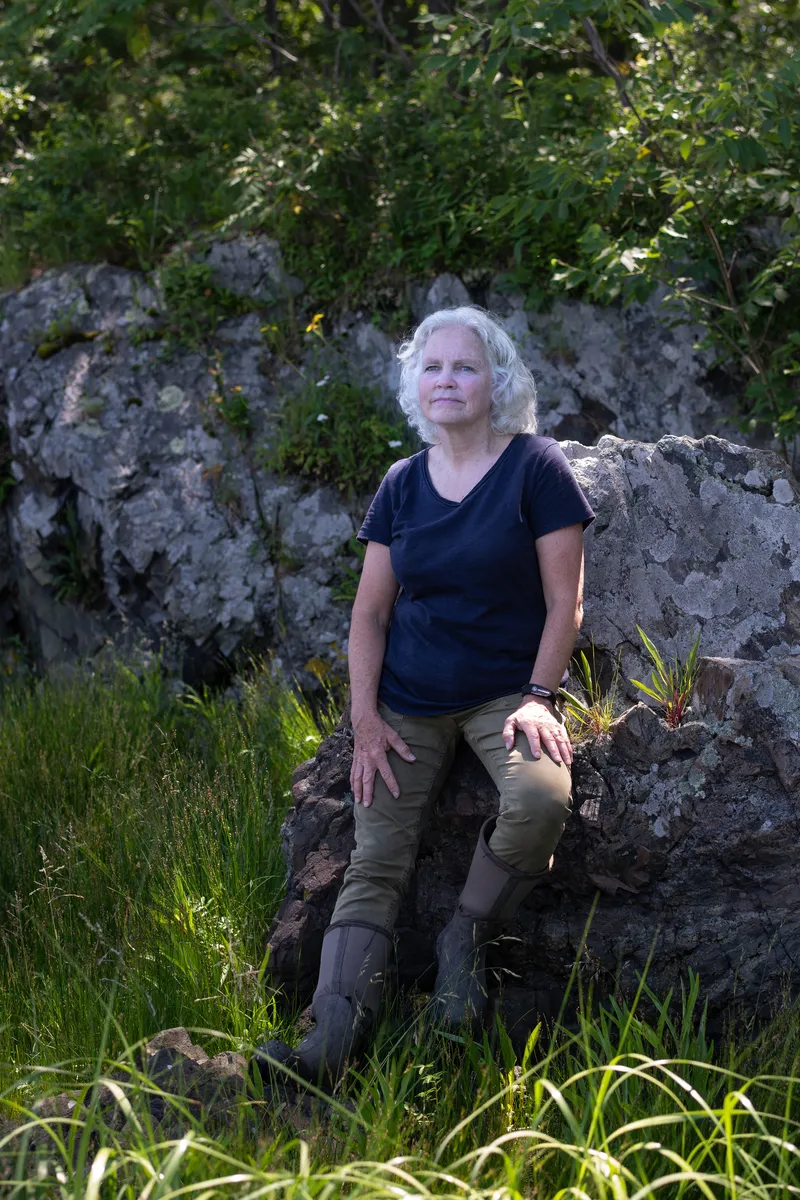
“Certainly, along the coast, we're looking at sea-level rise projections that are very frightening,” says Morgan. “I have two children, and my biggest concern is, what is the world going to be like when they are adults? Because the predictions right now are not looking so good.”
Morgan, who studies the marshes around the Gulf of Maine and the Saco River Estuary, explains that rising sea levels put the very existence of the marshes at risk — which is bad news for a multitude of reasons. Marshes act as natural water filters and provide a habitat for fish and birds and other wildlife; they are nursery grounds for fish species that are commercially and recreationally important; and they serve as buffers between the ocean and the upland area, mitigating wave and wind impact during storms. Perhaps most crucially, marshes absorb carbon dioxide from the atmosphere (the focus of Morgan’s current research), something they do better than any other type of habitat — even forests.
High Tide on Campus
Interestingly, scientists have shown that marshes, historically, have responded to rises in sea level by increasing their own in elevation, mainly by trapping sediments. But, unfortunately, sea level now is rising too quickly for marshes to keep up. Morgan cites a recent study that looked at salt water marshes around the world. “The study found that by 2100, in the best-case scenario for sea level rise, we will lose 60% of our coastal marshes,” she warns. “That’s the best-case scenario. If we do nothing about taking greenhouse gases out of the atmosphere, we will lose 90% of our coastal marshes. That’s catastrophic, not just for wildlife, but it's also catastrophic for humans because people who live adjacent to these marshes aren't going to have that coastal buffer anymore. You're just going to have those waves crashing up against your property.”
Morgan warns that she could easily see currently inhabited sections of coastal Maine underwater in the not-so-distant future — including parts of UNE’s Biddeford Campus. “My students and I took surveying equipment and went out along the Saco River, over by the kiosk,” relates Morgan. “We were asking, with different sea-level rise scenarios, where would the edge of the water be? And it turns out, the new sea level moves up pretty close to the Commons lawn. And that's not counting storm events when there's a lot more water coming through. So yes, it will impact us right here on campus.”
Markus Frederich and the Green Crab Invasion
Another UNE scientist conducting research in the Gulf of Maine is Markus Frederich,
a professor in the School of Marine Programs. Frederich studies the physiology of marine invertebrates and is currently focusing on invasive species.
“Climate change is affecting everything,” says Frederich. “Basic biology is affected by temperature, and climate change is all about temperature. Therefore, every single living thing is affected by increasing temperatures.”
Native species in the Gulf of Maine have adapted over long periods of time to thrive within a certain temperature range. When the temperature increases, the environmental conditions to which they are adapted are suddenly gone. Frederich’s research looks for markers at the molecular or cellular level that can help explain why some animals are more tolerant of warmer temperatures than others. The research will allow biologists to better predict which animals will be affected by climate change.
“Some species respond easily to environmental changes, and they have no problems,” says Frederich. But for many species, warmer waters are completely inhospitable. “It takes only a single hot day to wipe out some of those critters,” he continues. “So, it’s not only the average temperature increasing, but also the oscillation around that average. Therefore, if it gets too hot for a few days this summer, that might be the end of a certain species in this area.”
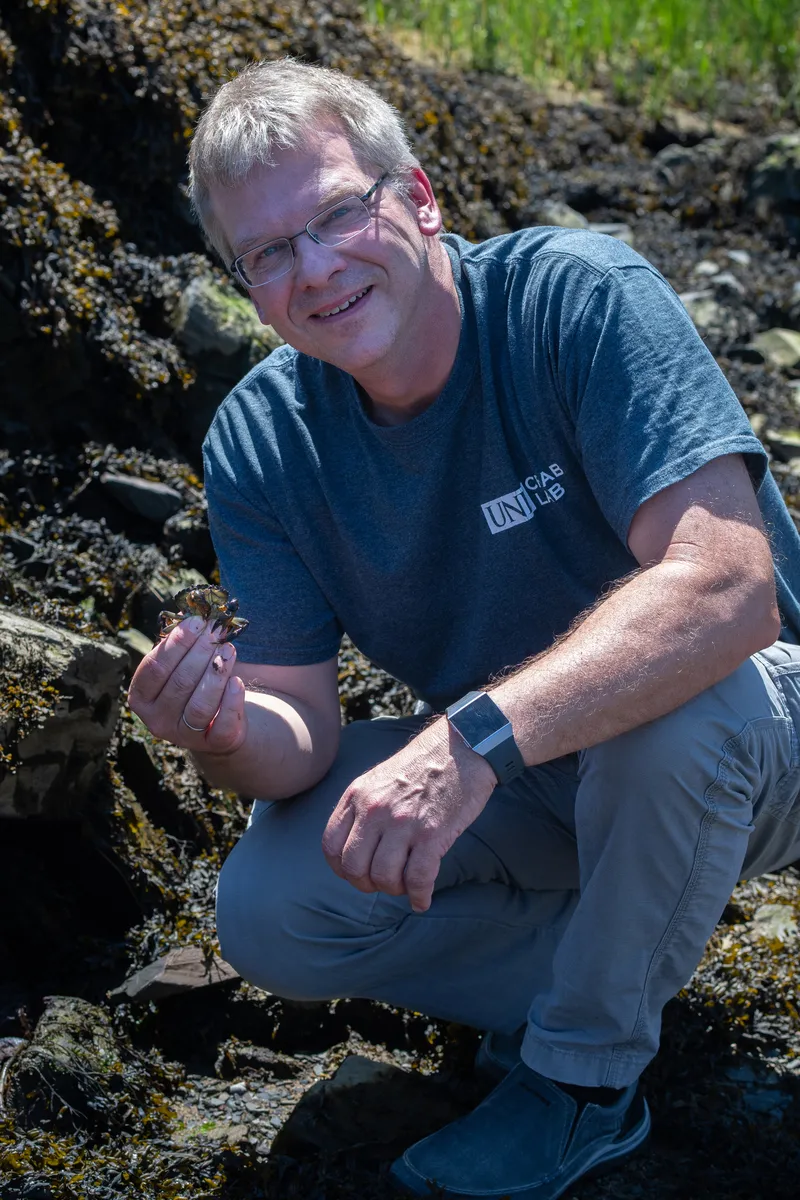
Goodbye, Lobsters?
Significant species migration due to climate change is already occurring in the Gulf of Maine. “The textbook example is cod,” says Frederich, “which are basically gone from the Gulf of Maine; while up in Iceland, they're catching a ton of cod right now.” And while Maine’s state-defining lobster fishery is currently considered healthy, warming has sent lobsters scurrying both northward and further out to sea in search of colder water. As a result, lobstering is mostly a thing of the past in Southern New England, and, as the Gulf continues to warm, there is a possibility that the lobsters could eventually migrate beyond the reach of Maine’s lobstermen and women.
At the same time, warm-water species are moving rapidly into the Gulf of Maine. “Lobstermen in Maine frequently report catching blue crabs in their traps,” says Frederich. “Even seahorses, black sea bass — all these warm-water species are being found more and more frequently now.”
Winners and Losers
“When people talk about climate change,” he elaborates, “they always talk about how everything will die or everything will be terrible. It's actually much more complicated because there will be winners, and there will be losers with climate change.” And in the Gulf of Maine? Frederich delivers the bad news: “Turns out most of our native species are on the side of the losers, and they don't do so well with climate change. Lots of the invasive species, they are on the winners’ side.”
Right now, the winners include the Gulf’s exploding green crab population. “They eat all the juvenile soft-shell clams and whatever juvenile critters they can find,” explains Frederich, “and severely impact the whole ecosystem by eradicating soft-shell clam fisheries.” Even more rapacious are the green crabs found in Nova Scotia, which are a hybrid of the Maine green crabs and a species invasive to Canada. “We've seen them literally jumping out of the water at us,” he continues. “It’s level of aggression that I've never seen before. If we think we have a green crab problem now, once those Canadian green crabs move into our area, it'll be much more emphasized.”
Susan Farady and the Policy Lag
Susan Farady, J.D., is an assistant professor of marine affairs, who teaches interdisciplinary courses on marine law and policy. She sees climate change undermining the entire scientific basis of marine governance and regulation. “All of the laws that are responsible for how we manage our natural resources are premised on the fact that we have good science and a pretty stable system,” says Farady. “We plug in the data and crank out results, right? Here's how many fish you can pull out. Here's how the Saco is going to stay sustainable over X number of years…”
But now? “The thing that I tell my students is that history is getting less and less relevant and geography is getting less and less important,” says Farady. As climate-change effects increase, marine species migrate in unpredictable and unstable patterns, making fisheries management more and more of a crapshoot. “Our management system for fisheries isn't nimble enough to respond to such rapid change,” she says.
System Vs. Reality: Not a Great Fit
The regional councils that manage commercial fisheries in federal waters are divided mostly along previously stable ecosystem boundaries and rely on past activity and stock assessments to make accurate predictions moving forward to guide policy decisions. As those boundaries and assessments lose their validity, it could throw the management system into chaos.
“We have species of squid that have migrated and are now landed almost entirely by the Rhode Island fleet, but they're still managed by the Mid-Atlantic Council,” says Farady. “Rhode Island isn't part of that council. Is that shift forever or is it a few years? We have no idea. That’s an example of where the geography doesn't fit what's going on with the system. The analogy I like to think of is the stepsister trying to get her foot in a glass slipper. It’s just not a great fit, and it's only going to become a harder fit in the future.”
The Insurance Barometer
Faraday decries the fact that there is very little work being done to address climate change at the federal level. But like Peter Slovinsky, she is quick to point to activity at the state and local level.
“I'm driving downtown in Portland,” says Farady, “and I'm seeing all of that infrastructure being built so close to the water, and I know J's Oyster [a popular waterfront restaurant] is flooding all the time. Are we thinking about higher buildings, more resilient buildings, and not putting the boiler in the basement?”
Farady believes that it is only a matter of time until financial considerations force all coastal communities to seriously plan around potential flood events and other climate-change impacts. “I think one thing that's going to start happening is that insurance and property value is going to start to drive behavior,” she says. “I think the question is whether we're smart enough to get ahead of those trends. Because at some point, after two or three or four catastrophic losses in a coastal community, an insurer is not going to be willing to insure properties for a price that people are willing to pay.”
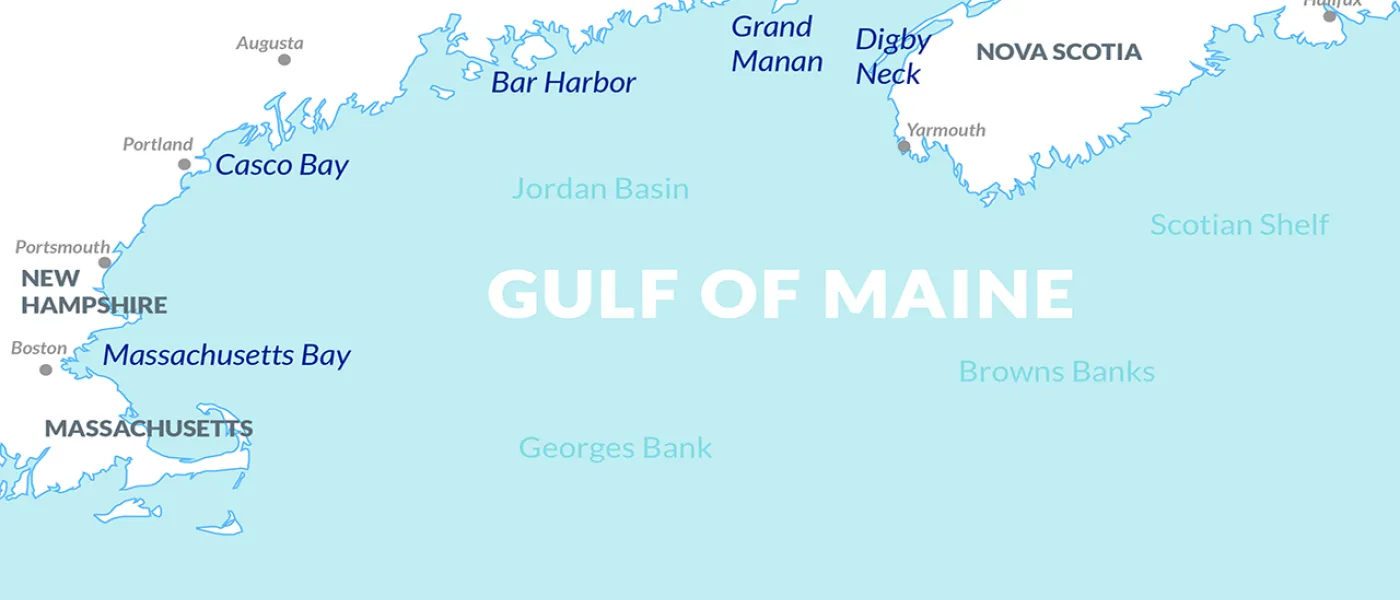
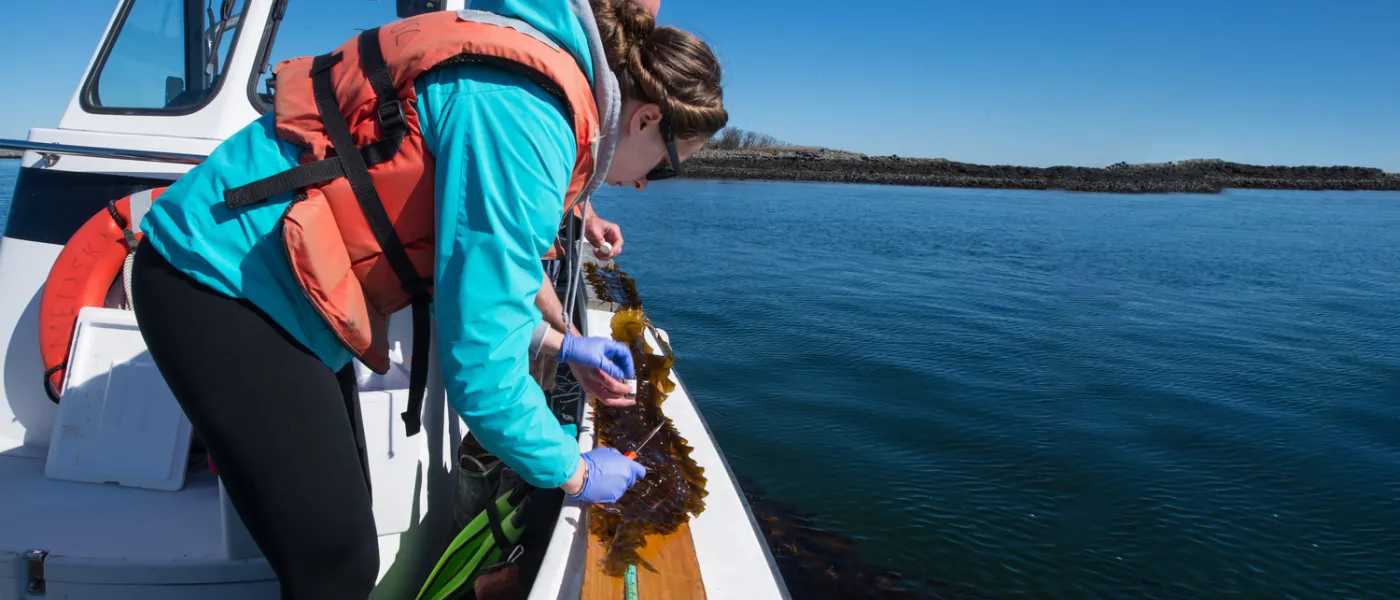
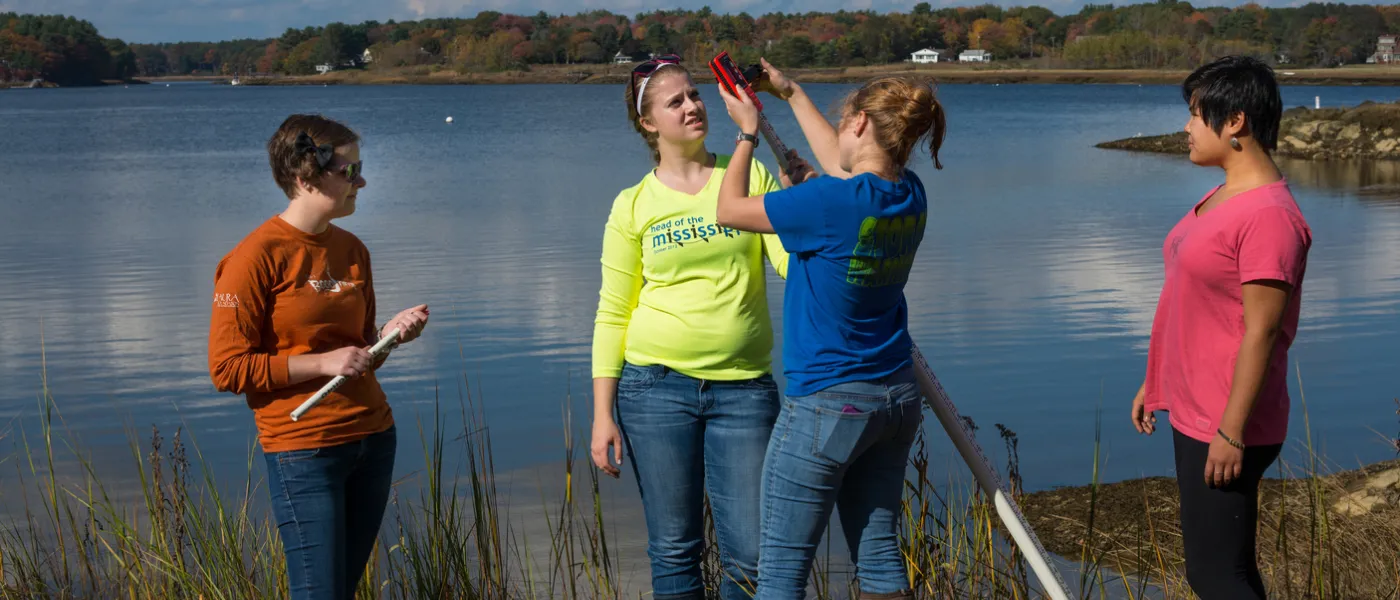
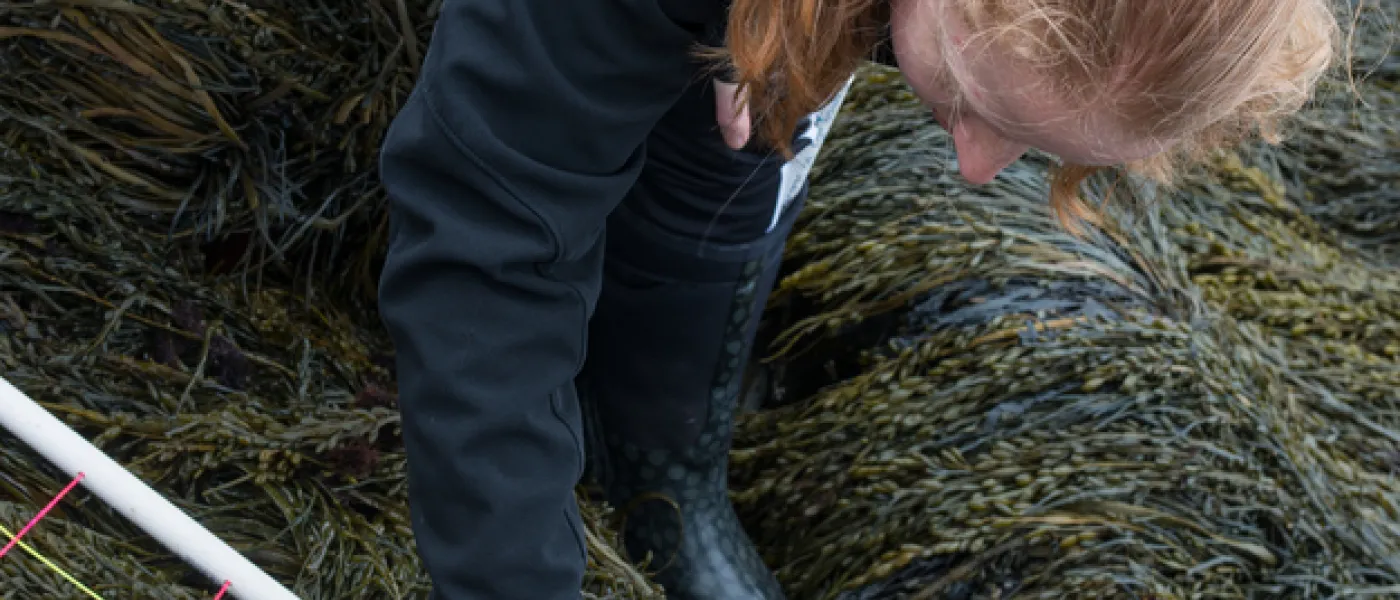
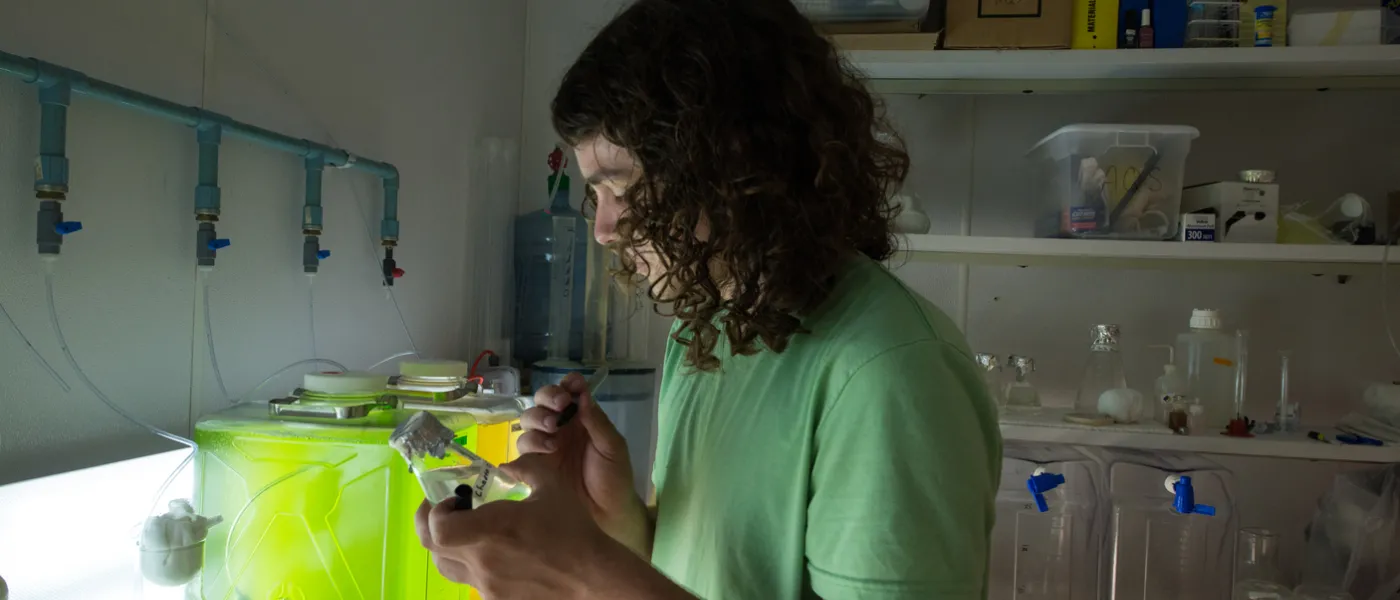
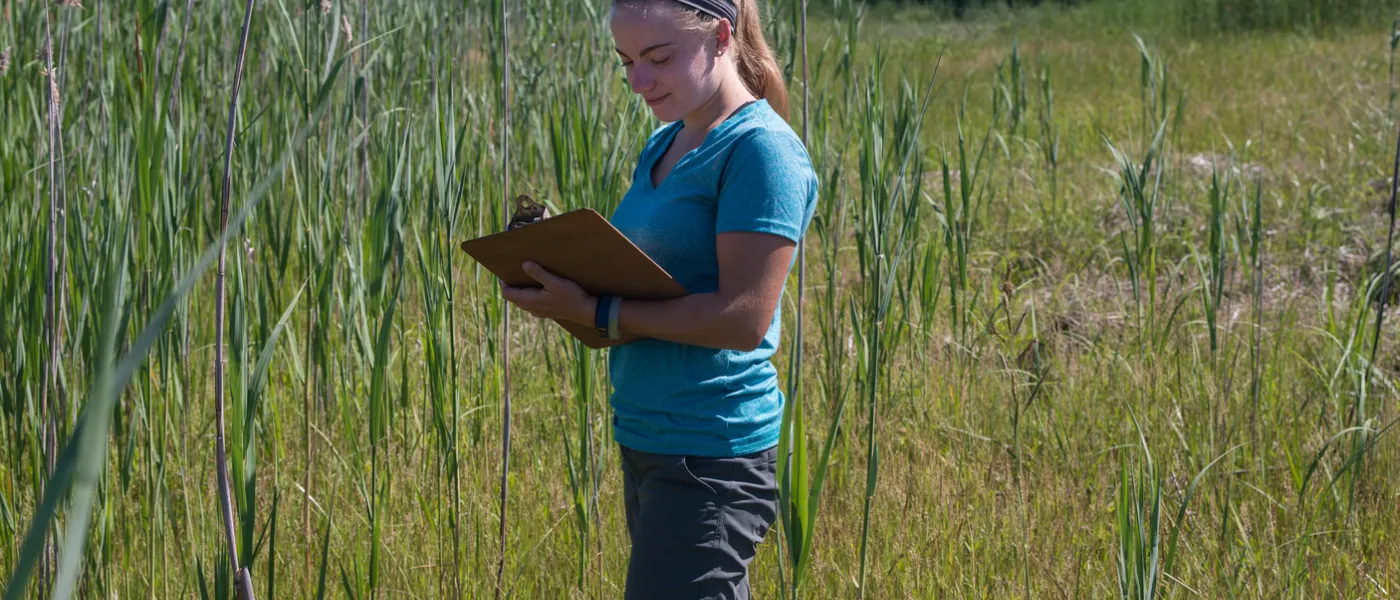
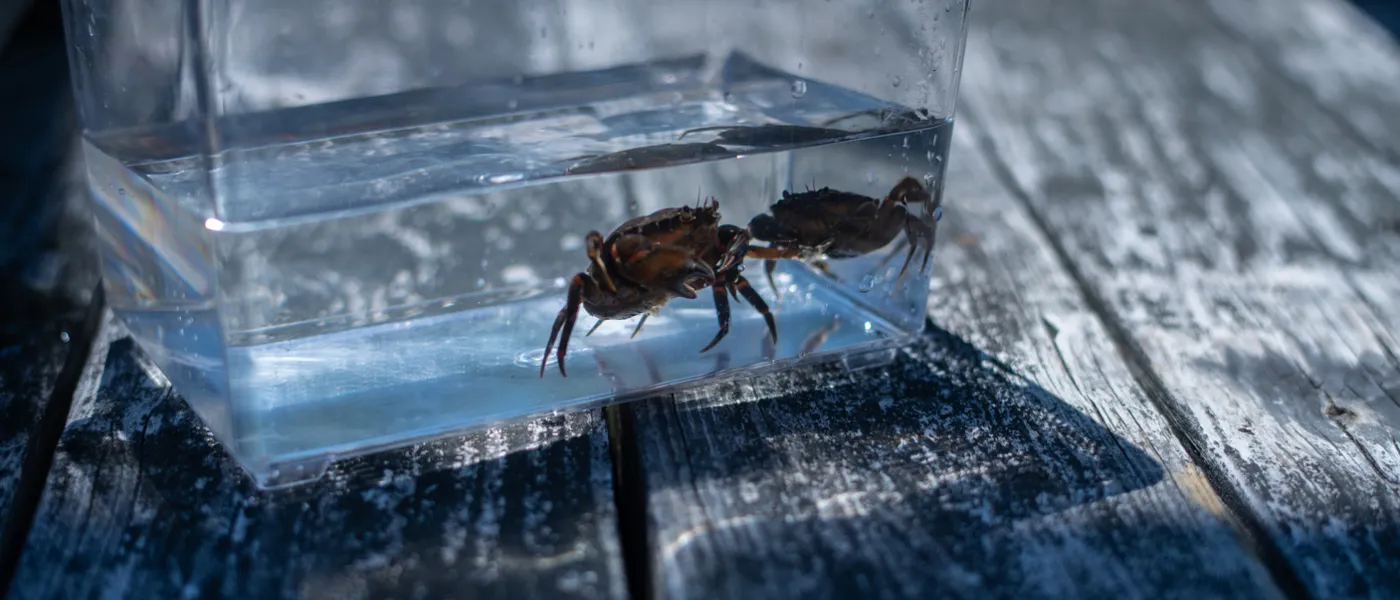
Meaghan Daly and the Societal Impact
Or a price that everyone is able pay. That’s where social scientist Meaghan Daly, an assistant professor in the Department of Environmental Studies, comes in. Daly explains that climate change is what social scientists call a “threat multiplier,” in that it takes existing social, political, and economic challenges and exacerbates them. “There's a really important element of social justice that's wrapped up in climate change,” says Daly. “As many have pointed out, people who are already most vulnerable — socially, economically — are going to have the most difficulty responding to climate change. Which means, as researchers and as policymakers, it's really up to us to figure out how can we level the playing field.”
Who Benefits from Aquaculture?
Daly’s current research project looks at the intersection of aquaculture and climate change in Maine. As the state’s coastal communities and fisheries (including the lobster fishery) are challenged by many different factors, including climate change, aquaculture has been offered as a potential option to provide a diversified livelihood strategy or a new livelihood altogether for Mainers who have traditionally made their living from the Gulf. Among the questions Daly’s team considers are, “Who are the people who are able to undertake aquaculture here in Maine?” and “Who is benefiting from that transition?”
“There are many reasons why aquaculture would be appealing to displaced lobstermen and women,” says Daly. “It enables them to stay on the water and remain in communities where they have homes.” But the transition can also present a set of challenges. “They are used to being out on the water, and they don't really see themselves as farmers, per se, so there is a change in their identity and a change in how they approach their work.” There are also economic and regulatory barriers, such as obtaining necessary permits, and getting through the leasing process can take time. “We can help people who are interested in aquaculture,” says Daly, “so they can navigate those challenges more effectively.”
“A lot of our fishermen and fisherwomen here in Maine are owner-operators,” she explains. “As small businesses, they may not have as many resources to do research as larger corporations or larger businesses have when setting up aquaculture projects.” But that doesn’t mean that lobstermen and women don’t have a wealth of valuable firsthand knowledge to bring to the table, and much of Daly’s work involves fostering communication among different stakeholders who may not always trust one another.
Establishing Collaborative Knowledge Processes
“There are a lot of challenges in getting people to engage in these collaborative knowledge processes,” she says. “First of all, it's just time consuming. But more fundamentally, there are differences or imbalances in power. A lot of average citizens are intimidated by researchers or scientists. They may think, ‘Well, those are the experts. What do I know?’ What we focus on is enabling those citizens, whether it's, for example, fishermen or coastal property owners, to recognize that they actually have a lot of valuable knowledge that can contribute to these processes.”
The processes require time and trust on all sides, but when they work, they can open up genuinely fresh perspectives on entrenched problems. “People start to speak the same language, they start to understand each other, and they start to recognize that those other people in the room aren't a threat,” says Daly. “They're actually partners who can help each other solve those problems. And that's really, really valuable when we're talking about how to manage some of the really large societal challenges that we're going to see with climate change.”
Overcoming Climate-Change Denial
One of the larger societal challenges is simple denial: many people refuse to accept climate-change science as fact, and even those who do accept the evidence, intellectually, may not be sufficiently motivated to alter their behavior. Daly is sympathetic. “Addressing climate change requires some really deep changes in how we live, and that can threaten people's values,” she says. “That can threaten their identities and threaten their livelihoods. So, it makes sense that people are resistant to having those conversations.”
This poses a challenge for social scientists. “As researchers,” she continues, “we need better ways of communicating and connecting to help people understand that climate change isn't just a far-away problem, and it isn't something that they can ignore. Because the livelihoods and wellbeing they currently enjoy are directly threatened.”
James Herbert and the Psychological Principles Underlying Denial
UNE President James Herbert, a clinical psychologist with a research background in cognitive behavior therapy, shared some insights about the psychology underlying climate-change denial. “Well, for one thing,” says Herbert, “we tend to think in terms of our own lifetimes: ‘How is this going to affect me?’ And then, as you get older, if you have kids, you start to think, ‘How is this going to affect my kids?’ Eventually, you might think, ‘How's it going to affect my grandkids?’ But very few people think about their great, great, great grandkids. If I said, ‘Think about how this policy is going to affect your great, great, great grandkids, most people would shrug: ‘I'll never know them.’”
Future Discounting
This is called ‘future discounting,’ a psychological principle that Herbert describes as “a very natural human phenomenon whereby we put much more emphasis on shorter term effects than we do longer term effects.” What makes climate change such a difficult problem for us to wrap our minds around is that continuing current practices, such as status quo fossil fuel use, brings great short-term benefits, while the consequences of those practices will be mostly felt in the long term. And, Herbert points out, “We need to make sacrifices today, but people who are going to be benefiting from those sacrifices are mostly going to be those future generations.”
Diffusion of Responsibility and Motivated Reasoning
Herbert mentions several other factors influencing the denial mindset. One is “diffusion of responsibility,” the widespread belief that the actions of a single person can’t make a difference. Another is “motivated reasoning,” which describes the fact that our reasoning is never purely objective — however much we might like to think it is. A common form of motivated reasoning is “confirmation bias,” which describes how incoming data is filtered according to existing beliefs and biases. “We are selectively attuned to data that fit our preexisting beliefs, and conversely, we tend to ignore data that don't,” says Herbert. “A person who is disinclined to believe in climate-change will find it easy to maintain that disbelief even in spite of mounting data to the contrary, simply because of the confirmation bias.”
Interestingly, research shows that higher intelligence is often correlated with greater cognitive rigidity, which may seem counterintuitive. After all, shouldn’t an increase in brain power give a person open-mindedness and flexibility of thought? Herbert explains, “The reason for the rigidity is that the more intelligent a person is, the more equipped they are to construct arguments against a position even when the actual evidence suggests otherwise. Verbal fluency, verbal reasoning, all those things we think of as cognitive assets, can actually work to strengthen cognitive filters, even against overwhelming data to the contrary.”
The good news, says Herbert, is that once we identify these psychological phenomena, we can begin to find ways to address them. “For example, with respect to diffusion of responsibility, we can work on building a social environment where people are strongly encouraged or incentivized to take collective action. You make it a community norm to do the right thing.”
Changing Mindsets
Encouragement that public mindsets are changing can be found in work done at Yale by Anthony Leiserowitz, a human geographer and director of the Yale Program on Climate Change Communication, which seeks to help leaders communicate more effectively and increase awareness of the risks and opportunities associated with climate change.
In an April 2019 publication, Leiserowitz and his colleagues reported that about seven in 10 Americans think global warming is happening. Daly attributes this positive shift in awareness to increasing personal experience with climate change. “One of the things that the research bears out is that as people are exposed to more extreme weather events, something that they personally experienced, they're much more willing to entertain the notion that climate change is both real and something that they need to address,” she says. “It becomes harder and harder to deny.”
Dan Chadbourne and the View From the Saco Pier
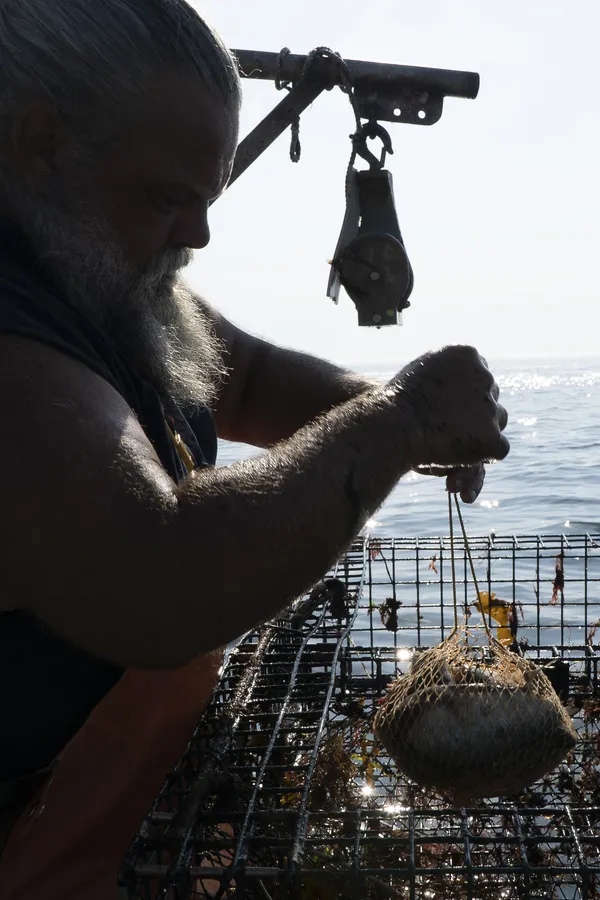
A second-generation fisherman and the harbor master for the city of Saco, Dan Chadbourne speaks with a kind of philosophical stoicism, as if climate change wasn’t something he wanted to waste a lot of time worrying about, whether it exists or not, since there’s nothing he can do about it either way. “I don't have a solution for this problem,” he says, “and I'm a solver. I like to be able to fix things. I build things, and I catch things. That's how I make my living. There’s seven billion of us on this planet, and this is so much bigger than all of us — we're not going to control this.”
Chadbourne reports that most fishermen remain skeptical about climate change. “They don't want to believe it's happening,” he says. “We don't really have a lot of information, and there's a lot of bad information around, so who do you believe?” In some cases, what scientists claim and what the fishermen see with their own eyes are not always in alignment. “We have scientists who tell us that cod are almost extinct — you can't even take one recreationally anymore,” says Chadbourne. “But I'll catch two in one of my traps in eight feet of water over in Biddeford Pool, so they're not extinct, you know? I think everybody has a certain amount of credibility, and it's just hard to make a decision on it.”
Storm Severity and Warm-Water Species
Chadbourne has also observed some phenomena consistent with climate change effects. “What I'm noticing,” he says, “is that the storms are more intense. A year ago March, we had three huge storms in a row. They actually were hitting the pier and lifting the corners up. That's not common. I remember a few big storms when I was a kid where we'd fill this whole parking lot with tangled ropes and broken traps. But it wasn't common. It happened maybe three times the whole time before I got out of high school. Now it's a regular thing.”
“And in my lobster traps,” he continues, “I'm catching fish that don't belong here. I'm catching triggerfish that belong in Florida. The first time I caught one, it was like, ‘Wow!’ you know? But now, I've caught so many of them, it's common. I don't even think about it: I just flip the trap over and dump them out.”
When asked if he believed lobsters were migrating north, Chadbourne concurred without hesitation. “Talk to the guys that are selling all their boats and their gear down in New York and Rhode Island — thousands of traps for sale.” But the possibility that lobsters might eventually leave the Gulf of Maine doesn’t especially worry him.
Jet-Skiing the Northwest Passage
“Nothing really keeps me up at night anymore, which might be an age thing,” he laughs. But he does have at least one climate change-related dream. “I'd like to sail through the Northwest Passage before I die. I've read all about [Captain John] Franklin and the Erebus and the Terror [a lost English expedition from 1845], and now they're running cruise ships in the same place. So that right there is proof as far as I'm concerned about climate change because that used to freeze for two or three years at a time, and, I don’t know…” He shakes his head. “Now it's open. There were guys running jet skis through that thing a couple of years ago.”
Barry Costa-Pierce and the New North
The rapid pace of climate change means that, not just the Northwest Passage, but many regions in the peri-Arctic are (or will soon be) ice-free for the first time in over 2000 years. The term “New North” refers to this transformed landscape and the sudden accessibility of the region’s previously unobtainable minerals, oil and gas, and fisheries resources.
Exploitation vs. Sustainability
It’s something humanity hasn’t seen in a long time — the opening of a truly new frontier. It presents a tremendous opportunity, while raising a multitude of ethical questions. “The word ‘exploitation’ rings in my ears,” says Barry Costa-Pierce, director of UNE NORTH: the Institute for the North Atlantic. “The question is, can we change our human development model of the last few hundred years from one of exploitation to one of sustainability? Are we on a better pathway towards a future that is more just: socially, ecologically, environmentally? We have to work towards a sustainable-development model that could actually recover the arctic ecosystem and work with indigenous people rather than just going into another cycle of massive exploitation.”
Because its location makes Portland’s deep-water harbor a gateway to the U.S., and through institutes like UNE NORTH, Maine has an increasingly significant role to play in the development of the New North. “I am so proud of where Maine has come in the last few years in joining the international community,” says Costa-Pierce. “I think I've been to the last four Arctic Circle Assemblies in Reykjavik, Iceland, and this year Maine will have the largest delegation. We have a real voice, and we have a very diverse voice. So what Maine can do is continue to participate in the international community as a strong voice for bringing sustainable development models to the New North.”
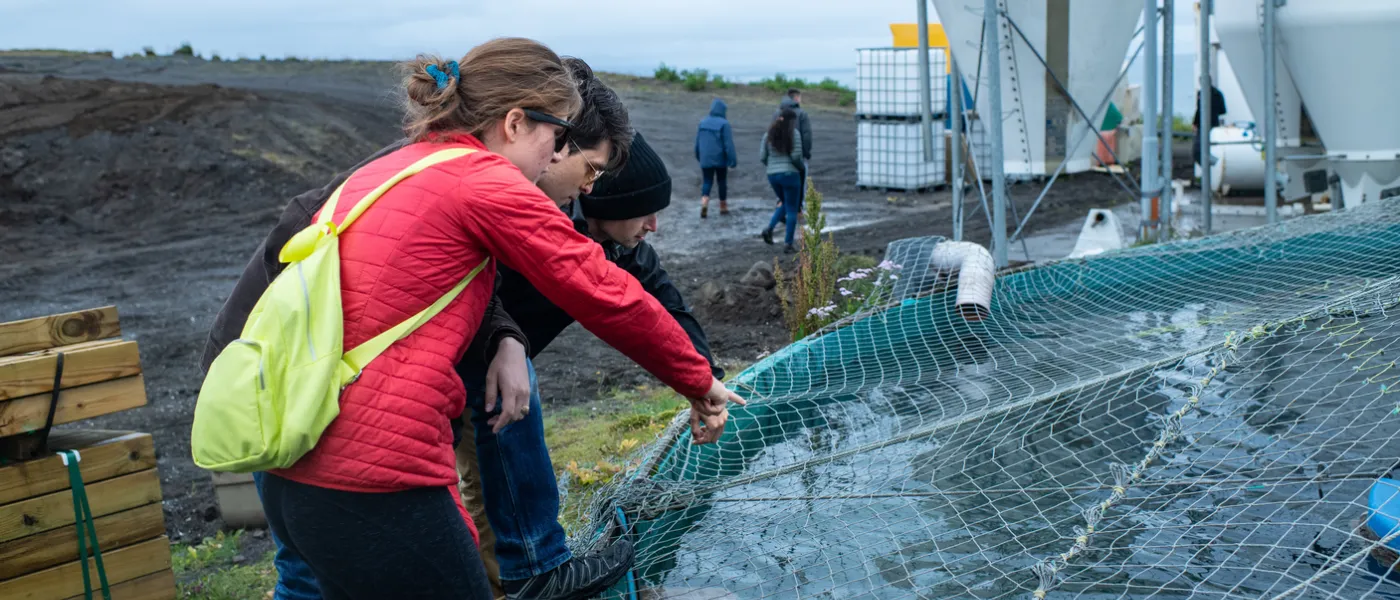
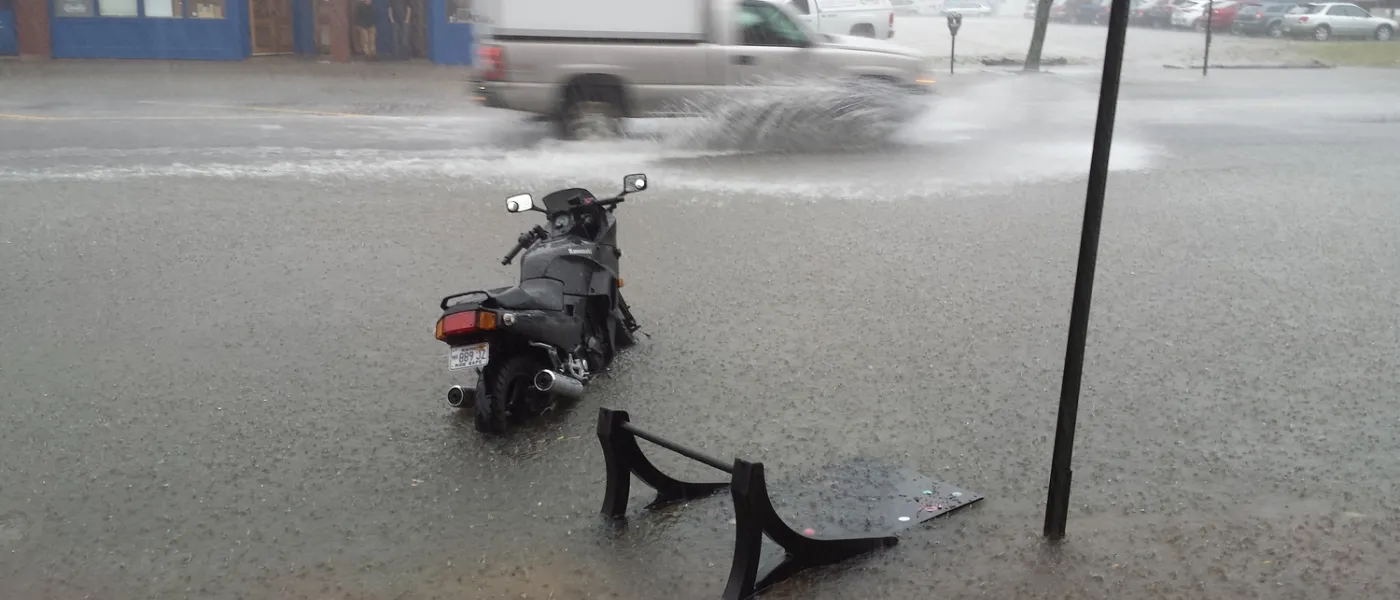
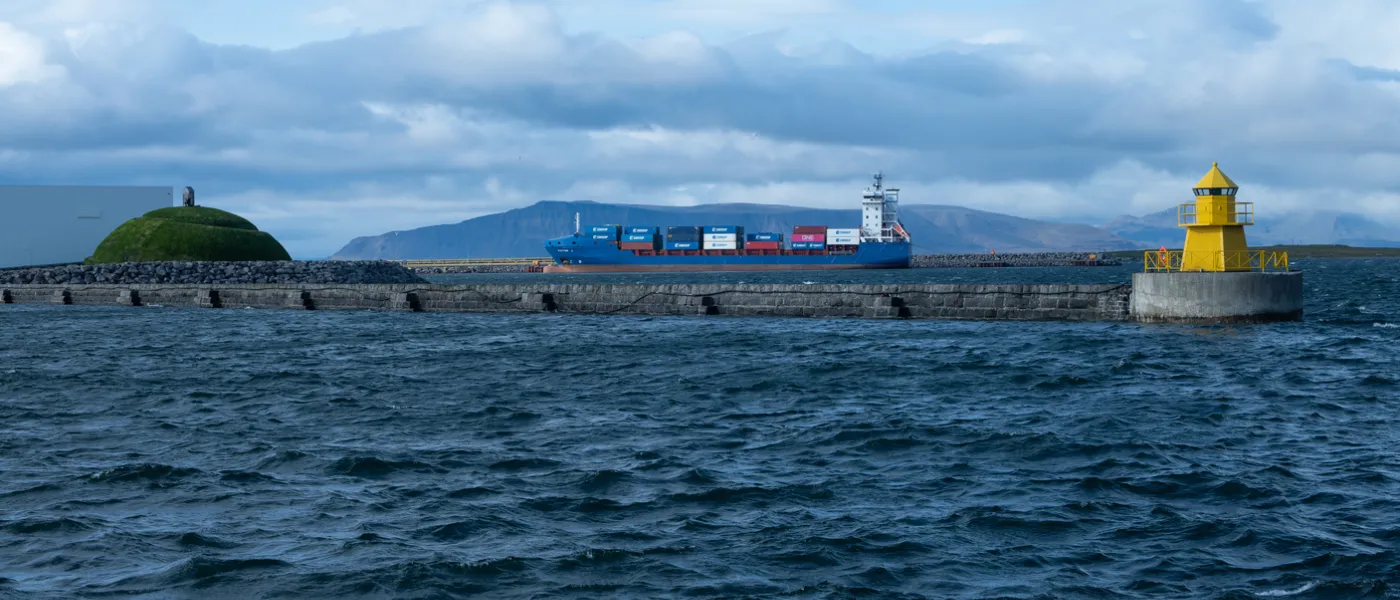
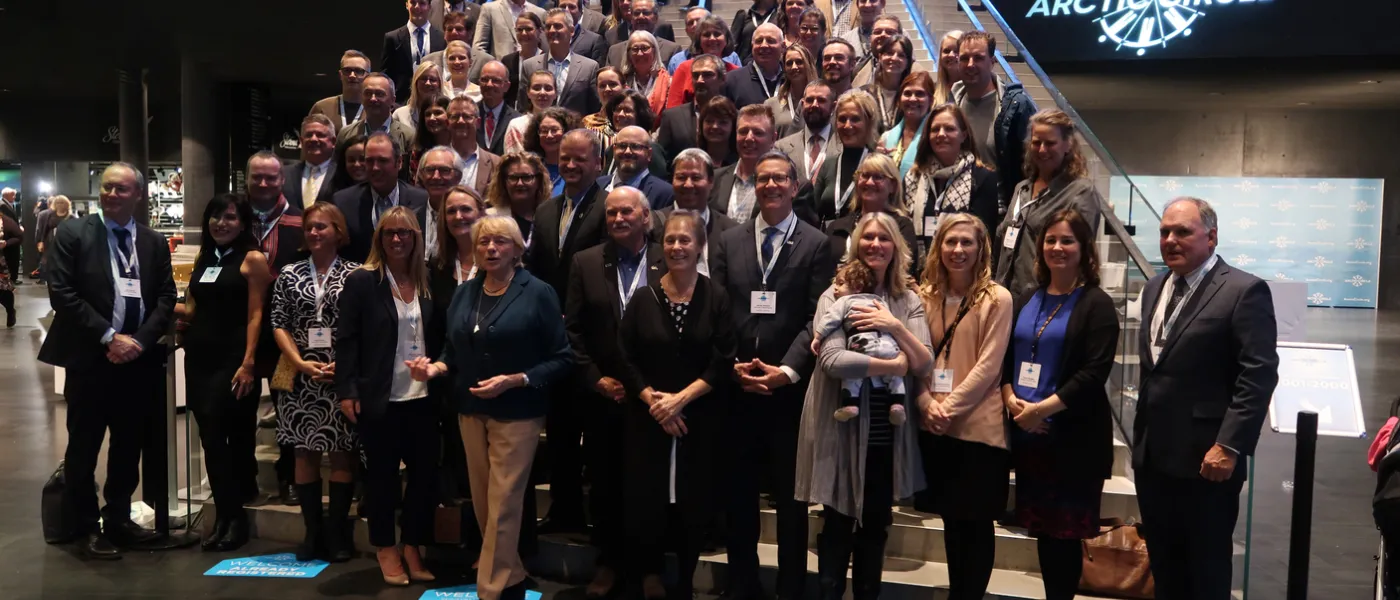
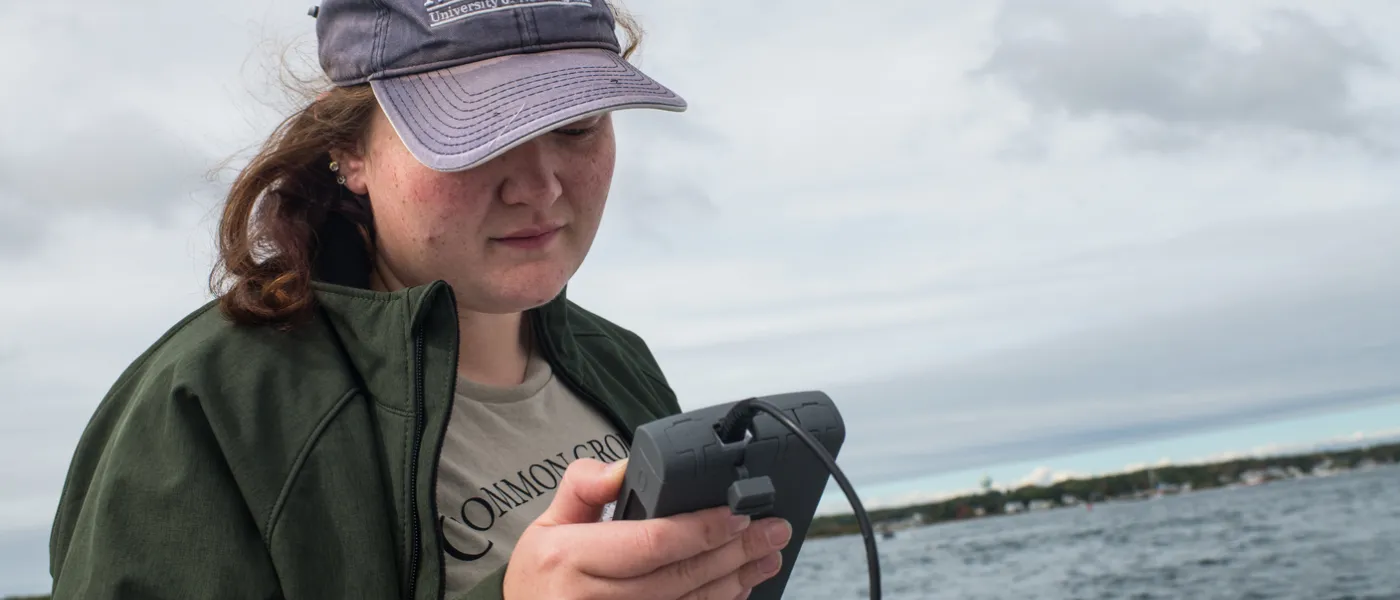
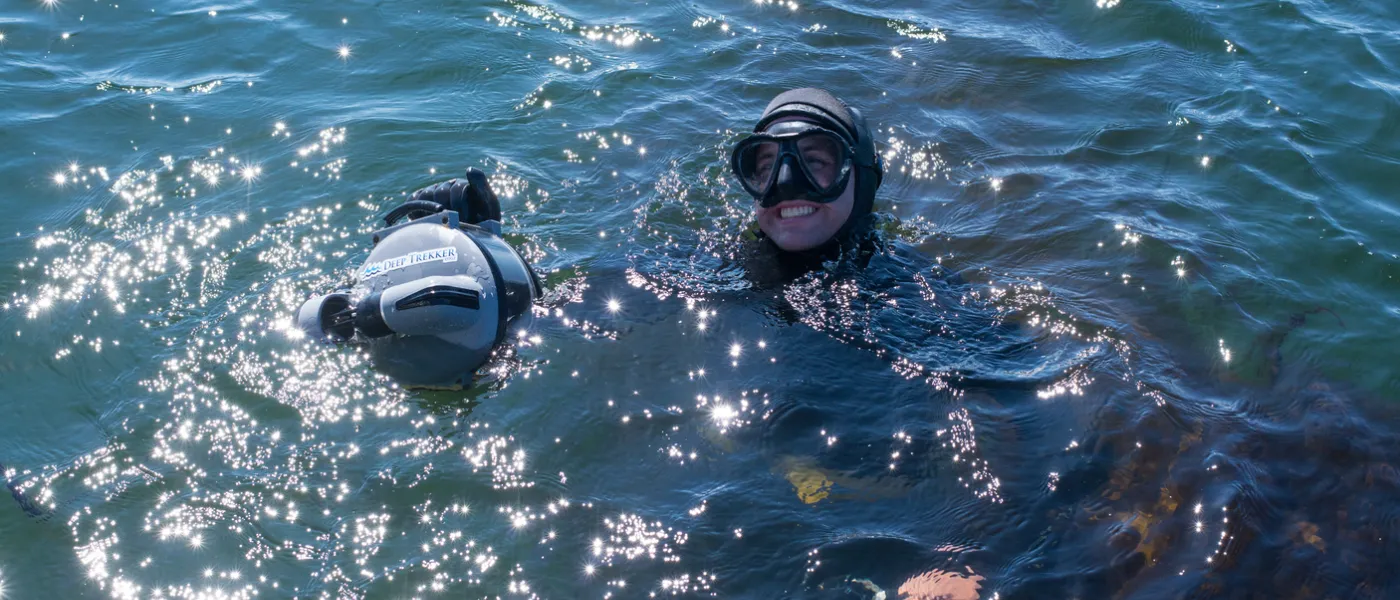
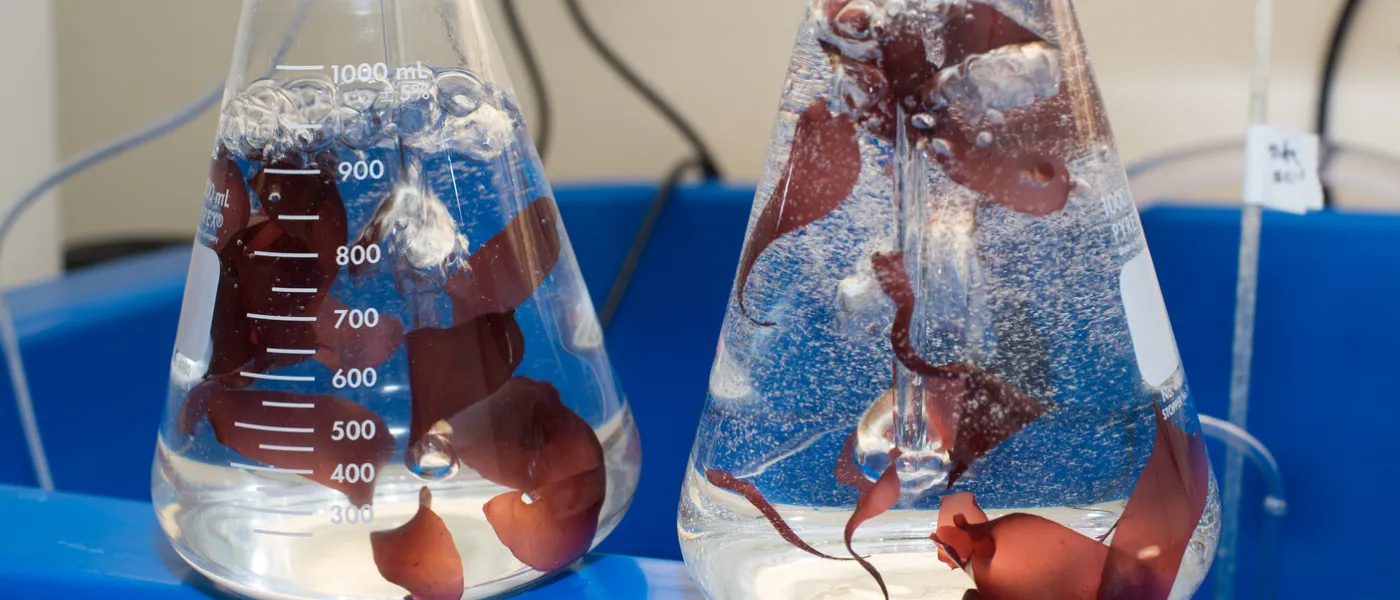
Reasons for Hope
As he travels around the world, in Asia and working closely with UNE NORTH’s Nordic partners, Costa-Pierce says he is heartened by what he characterizes as a “phase-shift” in resource development models, as sustainable development goals are increasingly integrated into job training, higher education, and government planning and policy. “That didn't exist even as recently as 10 years ago,” he says. “There are centers of hope out there that I think can help lead the world. I hope it doesn’t take a few disasters for us to wake up. And I hope that we don't respond to disasters by building more walls — and instead, that we build more bridges.”
For CHARLES TILBURG, there’s no choice but to be hopeful because the stakes are so high. “We have to get this right,” he says, “and we have our work cut out for us because no one has ever seen anything like this before. There's no model to fall back on.” Tilburg takes a scientist’s long view of things but expresses the belief that, eventually, human ingenuity will figure out ways to adapt to a planet transformed by global warming. “I think a hundred years from now, we will have figured out how to live with the changes” he says. “Notice I don't say counteract them — we're not going to counteract them. But we're going to figure out how to live with the changes, and that's why I'm hopeful.” His ultimate goal as a scientist? “That’s easy,” smiles Tilburg. “It’s for people to not need climate change scientists like me.”
PAM MORGAN also expresses faith in human ingenuity — but with more reservations. “I am not going to paint a rosy picture,” she says. “I THINK IT'S GOING TO BE CHALLENGING.” For Morgan, a big part of the problem is governments that refuse to address climate change in ways that are anywhere near commensurate with the severity of the threat.
“Many scientists may say that I am not supposed to be advocating for a position,” says Morgan, alluding to the scientist’s traditional stance of complete objectivity. “However, I disagree with that. I believe that as scientists, when we see what's going to happen, and it's based on science and scientific fact, and we know what the implications are, it is our duty — our moral responsibility — to speak out. Because we see what the impacts are going to be on people here in our communities. And so WE HAVE AN OBLIGATION TO SPEAK OUT AND TO ADVOCATE FOR CHANGE TOWARDS A BETTER FUTURE. That's what I believe.” She pauses, then adds: “You can put that in the magazine.”
Like many UNE scientists, MARKUS FREDERICH finds hope for the future in his students.
“They impress me a lot by really understanding the issue,” says Frederich. “They know climate change is real, and they want to make a positive impact. They even select their majors based on where they can make an impact on those big issues. So, they absolutely get it. This is why I have a lot of hope because there is a generation coming up that grew up with climate change, that understands climate change, and I think they will be ready to tackle it.”
Action is what triggers hope when MEAGHAN DALY ponders climate change. “Hope is a tricky word,” says Daly, “because we can have a false sense of hope: somebody else will fix it; somebody will take care of it. It doesn't have to be me. So, what I often talk to my students about is that we need a realistic hope. We need a hope that's attached to a sense of action, right? So we can generate our hope from taking action out in the world rather than sitting back and saying, ‘Oh yeah, I'm hopeful somebody else will solve this.’”
Trying to keep things in perspective helps SUSAN FARADY maintain hope. “Humans know how to adapt,” says Farady. “Some of the most comforting voices for me to hear, related to climate change, are those of the tribal people in the region. Because they say, ‘We think seven generations back and seven generations forward; Our ancestors were hunting mammoths out on Georges Bank. We've adapted, we know about change, and we have our ancestral history to advise our wisdom going forward.’ Again, the pace of change, and what we are doing about it, and all that political, human angst — that's real. It's true. We should think about it. But, I think, also, at another level: We've got youthful, resilient, energetic, passionate, young people. We've got great science, and humans over time have learned how to be resilient and adapt. So…” She laughs ruefully. “That's the best I can do.”
“You can see the catch is less,” says lobsterman DAN CHADBOURNE, standing on the dock at Camp Ellis. “When I was a kid, everything we fished was right in the bay — you could see everybody from here.” He gestures out towards the water, making it clear that by “everybody” he means all the fishermen. “And now,” he continues, “the lobsters are outside the bay because the water's colder. They’re in the deeper water. There's less — there’s almost half of what we used to catch. So, there's something to this.” By “this” he means “climate change,” but it’s almost like he’d rather not utter the phrase itself.
“I mean,” he continues, “I kind of follow it to a certain extent, but, as a fisherman, there's almost a point where you don't want to believe it's happening. You just like the status quo. You know: I just want to go out, I want to haul my gear, I want to get what I get, and come home and be a happy guy. But it is what it is. The world is the world and we have no control over mother nature's doing." Chadbourne shrugs. “We think we do, but we don't.”
